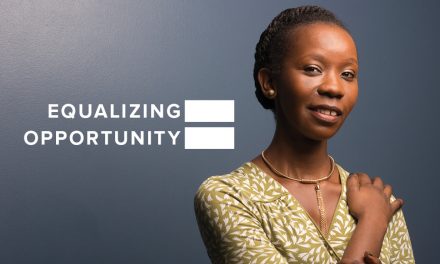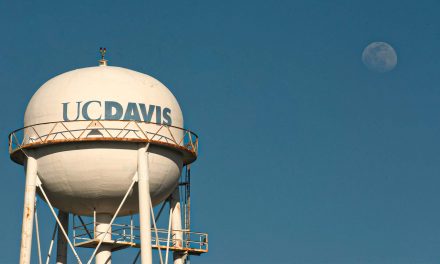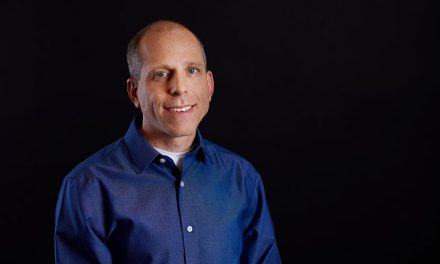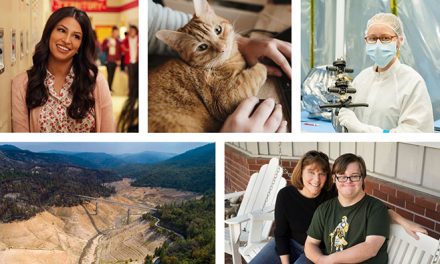The Library's Modern Mission

F
ifteen years ago, the magazine Library Journal named the MIT library’s director of technology a “futurist,” praising her knack for “being in the right place at the right time,” as she focused on building new systems to bring the library into the digital age.
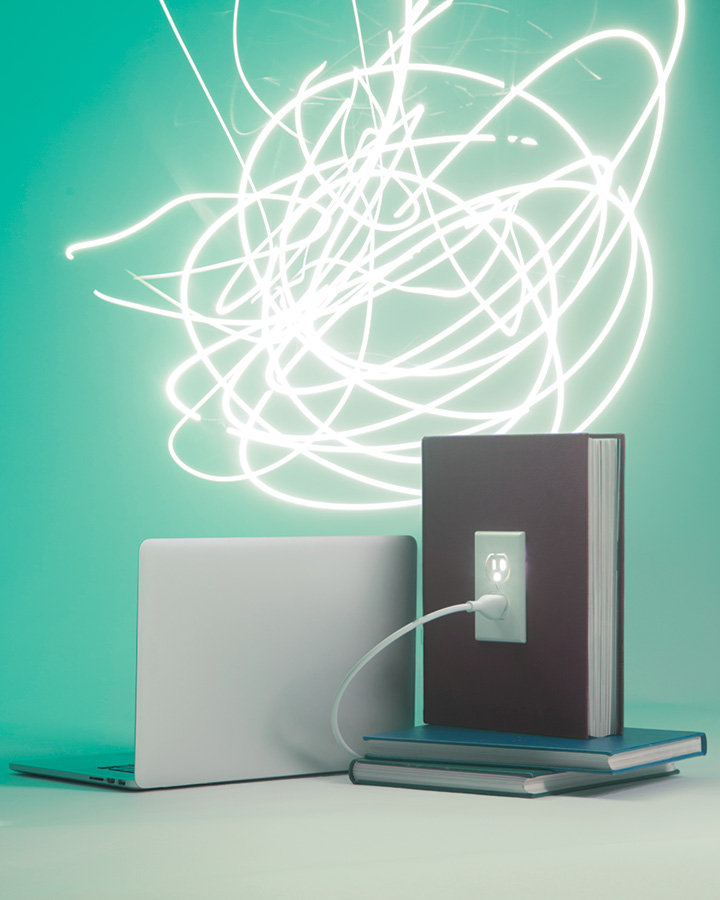
Photo: Gregory Urquiaga/UC Davis
Now MacKenzie Smith is on the other side of the country and at the helm of UC Davis’ library, where she is preparing to lead the organization through a fundamental shift.
The UC Davis Library is planning a massive renovation and re-envisioning of the role it should serve, to be led by Smith and a team she has been building for the past six years. The process will take years and millions of dollars, and it’s not just a facelift: It could challenge the traditional notion of a library.
“We want to change people’s minds about what a library is today,” said Smith, now UC Davis’ university librarian and vice provost of digital scholarship. “And the space is certainly a big piece of that but by no means the whole story in the internet age.”
The last time Peter J. Shields Library, the main campus library, was renovated, the Berlin Wall was being demolished and a proposal from researcher Timothy Berners-Lee introduced the world to the term “World Wide Web.” Needless to say, the way people study and do research has changed, but the physical library largely hasn’t.
The building, centrally located and by far the largest on the Davis campus, houses more than a million books but only four group study rooms. During finals, students huddle around electrical outlets or turn stairways into makeshift study areas.
“Imagine O’Hare or San Francisco International or Atlanta’s airport in a
horrible weather delay,” said Bill Garrity, deputy university librarian and chief of staff. “That’s what Shields is like during finals week.”
Luckily, Shields has plenty of space to change things up — 350,000 square feet in all.
Some of that space could be used for students who want to learn how to use 3-D printers, hone their presentation skills or explore in virtual reality. A café will likely be added, and group study space will be increased. Two of the library’s group study rooms have already been modernized with digital displays and new furniture as a way to gauge student response.
“We want to change people’s minds about what a library is today.”
— MacKenzie Smith, University Librarian
“The library is morphing into more of a lab,” Smith said. “And it’s a lab that provides students with the tools, the infrastructure and the expertise that they need to be good students and researchers today.”
The renovation will almost certainly involve moving some physical books — either to one of the other two libraries on campus or to one of the University of California’s off-site storage facilities, which hold 11 million volumes that can be quickly recalled to Davis or scanned and emailed. That would make more room for students, who vastly outnumber all others who come to the building. Ninety-three percent of all Shields Library visitors are students, and the number of visitors is only expected to increase as the campus makes room for nearly 7,000 more students in the next decade.
In fact, UC Davis has made steps to accommodate that growing population: Three new residence halls opened last year, with more housing on the way, and a new 600-seat lecture hall is expected to open this winter. A $24 million renovation of the Memorial Union just wrapped up. And while study spots exist in those places, the library represents a more focused locale.
“It’s an inspiring space for students to be students,” Smith said. “That is something we don’t want to lose in this transformation.”
An active partner
The library’s reimagining process isn’t just about the building but also the role it plays within the university, and that role is already changing.
Libraries have always been about transferring knowledge, Smith said, and the campus library is more active in that process at UC Davis. Librarians now teach first-year seminars on how to do research and help researchers plan projects so their results can be easily published online.
“We get much more involved in training students and working with faculty on the right way to set up aspects of their research projects so that they’re doing things in a way that will allow them to publish and preserve and share,” Smith said.
The library also supports open-access publishing, digital journals that are free to read and share, by providing copyright guidance and helping researchers cover publishing fees for their articles.
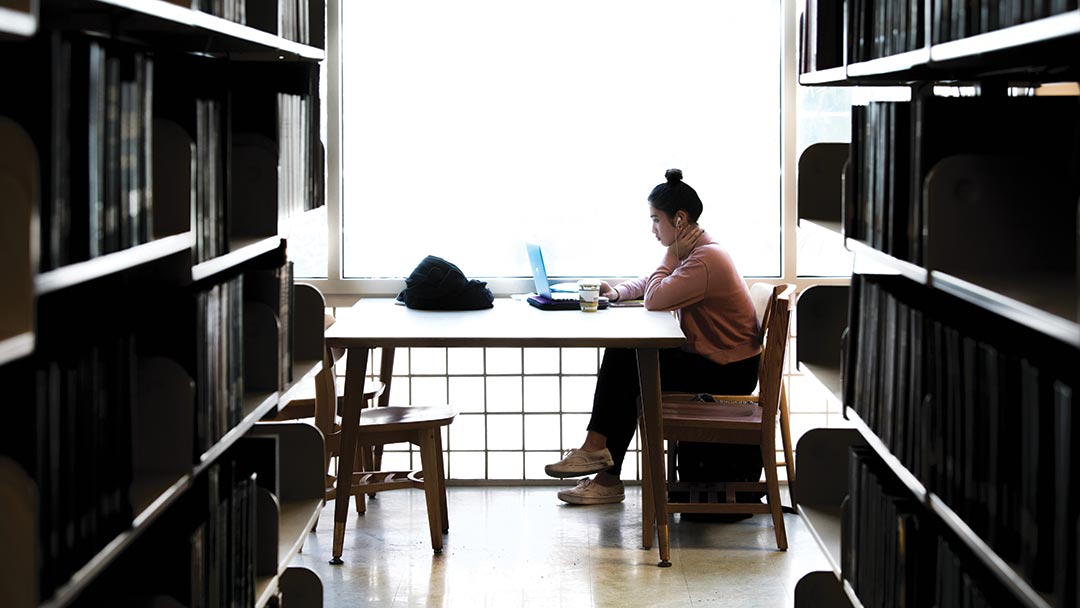
Photo: Gregory Urquiaga/UC Davis
In addition to helping researchers, the library will increasingly turn its focus to student success.
Library officials said they would like to use this renovation process as a catalyst to strengthen ties with other campus units with a focus on student success, like centers for specific underrepresented campus populations. The University Writing Program and the Data Science Initiative are already housed in Shields Library, and Smith said the physical renovation could make space for others.
It could also make the library space more welcoming to first-generation college students who aren’t familiar with research libraries.
“Imagine if you walked in and you saw a help desk staffed by people who are able to answer basic questions and refer you to the appropriate subject or technical expert,” Garrity said.
Garrity and Smith also envision a future in which more experts from the library venture out to lend their expertise in labs or in classrooms.
“We’re more than a physical space,” Garrity said. “We have a digital
footprint across campus through our online services and resources.”
Learning from others
Garrity said a renovation is long overdue at Shields and added that being late isn’t always a bad thing.
“The model is pretty well established by this point,” he said. Staff from UC Davis are taking pointers from others who have renovated their libraries recently.
Libraries all around the country are trying to adapt to the way people learn in the 21st century. Sometimes the process goes smoothly: A renovation at UC Berkeley’s Moffitt Library has received positive feedback. Sometimes there are hiccups: By the time UC Santa Barbara was ready to break ground on a $76 million renovation of its main library, seismic requirements had changed and plans had to be largely redone, Smith said.
When Shields Library was last renovated in 1990, designers didn’t plan on the building being used any differently in the future. Service desks are permanently installed in place, and rooms can’t be reconfigured easily. Because this renovation is expected to serve campus for the next 50 years, it means leaving a lot of flexibility for how the building might be used in the future, Smith said. For example, what if wireless electricity becomes commonplace and the now sought-after power outlets aren’t needed?
Reimagining, in three phases
The process of transforming and modernizing UC Davis’ library will be a multistep, multiyear process. Here is what lies ahead:
Phase 1: Visioning — In 2016, UC Davis partnered with Brightspot Strategy, a design consulting firm, for a study about the kind of service the library should provide. The result: a 122-page report that will guide much of the process going forward.
Phase 2: Detailed programming — During this stage, campus staff will create requirements for the redesigned library space. For example, the construction will likely include adding a café to Shields Library, but where should it be built?
Phase 3: Design and construction — Staff will have to overcome a logistical hurdle: how to renovate the university’s main library while keeping it open to visitors. Construction will likely happen in phases.
Libraries elsewhere are choosing flexibility in their renovations, too. The two renovated floors of UC Berkeley’s Moffitt Library that reopened in 2016 include new, glass-walled group study rooms that allow students to practice giving presentations. But library staff chose portable projectors over permanent displays that would be harder to replace if they became outdated.
“We’re using Moffitt as a real experimental space,” said Jean Ferguson, UC Berkeley’s learning and research communities librarian.
The changes at UC Berkeley extend to how the Moffitt Library helps people learn.
“Libraries are transitioning to becoming service organizations, helping people connect to information,” Ferguson said, noting that information now takes the form of everything from printed books to virtual-reality representations of artifacts scanned from the collection of the campus anthropology museum.
Someone trying to predict future uses of a library could be enticed by new technology and aim for a scene straight out of a sci-fi film, but those who have been through the process advise striking a balance.
Cushing Academy, a private boarding school in Massachusetts, was hailed in 2009 as the first all-digital library in the country. It removed all of its physical books, but faced a backlash and five years later began reintroducing print volumes.
The switch forced faculty there to use devices they weren’t comfortable with and made the library feel like less of a contemplative space, said Mark Melchior, who served as Cushing’s library director from 2014 to 2016.
“When I got there the faculty were shell-shocked,” Melchior said. “They felt like they weren’t consulted in that process of removing the books.”
UC Davis is already doing outreach, including a process in the spring and fall of 2016 that reached more than 500 people through individual interviews, focus groups and an analysis of what people like and dislike about each part of Shields Library.
Staff at UC Davis are studying what other libraries have done, but none will provide the perfect model. Just as each of the library renovations elsewhere sought to address unique issues, UC Davis has its own characteristics that make this project unique, Smith said.
“We’re not the only library in the world trying to do this, but I think we’re really well positioned to do it better than a lot of other institutions.”

